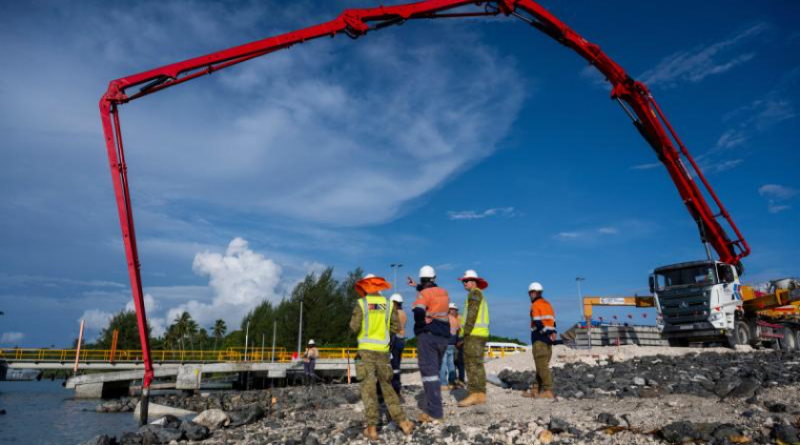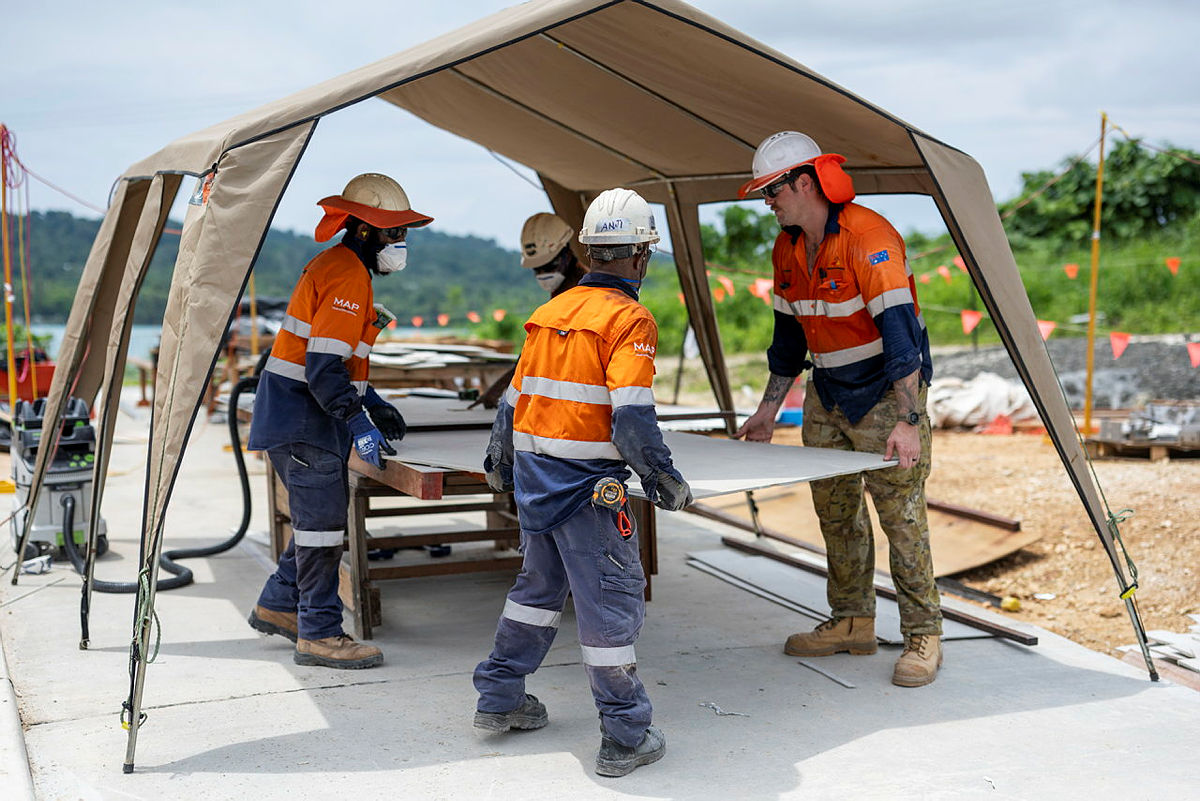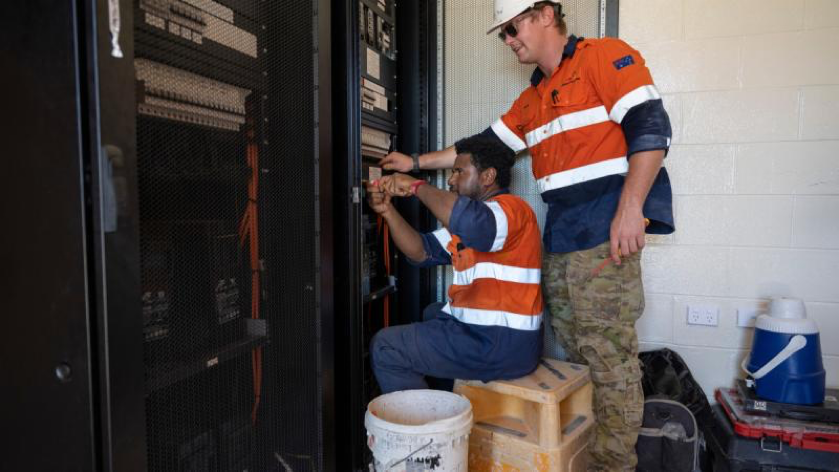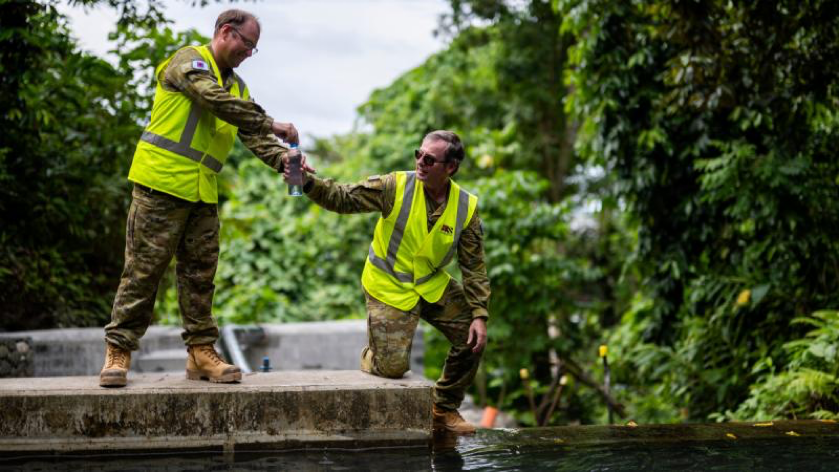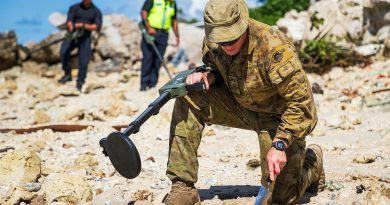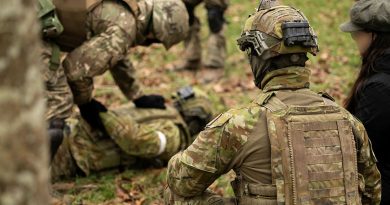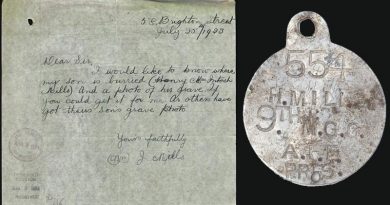Aussie sappers and tradies at work on Admiralty Islands
Share the post "Aussie sappers and tradies at work on Admiralty Islands"

During World War 2, more than 200 ships could be found at anchor in Seeadler Harbor, Papua New Guinea, a natural harbour protected by a barrier reef and 11 smaller islands that form part of the rainforest-covered Admiralty Islands.
CAPTION: Australian Army officers Captain Will Guelen and Captain Max Cubis, of 12th Chief Engineer Works, oversee the concrete pour for the boat ramp under construction at Lombrum Naval Base, PNG. Story by Major Evita Ryan. Photos by Corporal Joshua Thomas.
Of great strategic importance during the war, Seeadler Harbor, which borders Manus Island to the west and Los Negros Island to the east, includes Lombrum Naval Base on Los Negros Island, a PNG Defence Force (PNGDF) patrol boat base and home to four Guardian-class patrol boats provided by the Pacific Maritime Security Program.
Building on decades of support through the PNG-Australia Defence Cooperation Program, Australian Army tradies from 6th Engineer Support Regiment and project engineers and support staff from 12th Chief Engineer Works are extending Australia’s long history of support.
Under the Lombrum Joint Initiative, led by Australia’s Pacific Division and the PNG Department of Defence, the Lombrum Naval Base is being redeveloped to enhance the PNG Defence Fence’s ability to protect its sovereign borders and maritime resources, and provide increased opportunities for joint engagement between the ADF and the PNGDF.
CAPTION: Sapper Nathaniel Bevis, of 6th Engineer Support Regiment, assists contractors with cutting plasterboard.
As the major infrastructure works near completion, a small team of Army carpenters, electricians, plumbers and plant operators are working alongside local PNG and contracted engineers and tradespeople to help deliver the final stages of the works.
12th Chief Engineer Works Project Engineer Captain Will Guelen arrived in May for a three-month deployment that was extended by a further three months.
“When I arrived, I jumped straight into helping resolve technical queries and streamlining the process between the designer, the contractor and the project manager to reduce delays and get the main works package delivered,” Captain Guelen said.
“We’re here to make decisions in real time and provide direct client supervision on behalf of the Australian Government.
“A works package of this size and scale, with a complex contract methodology, is difficult to manage remotely.”
The main works to refurbish and rebuild fundamental infrastructure began in early June 2021 and is due to be completed next month.
Designed to accommodate the PNGDF workforce and their families, the project includes new electrical generation services to power the island, new water and sewerage services to supply the base and new maritime infrastructure, including barge landing ramps.
The new office accommodation includes a guard house with a sentry post and a headquarters building for about 40 personnel, while the fully furnished living-in and transit accommodation and combined mess facilities will accommodate almost 200 sailors and officers.
“There are 500 people working across the site most days, including our 15 tradies,” Captain Guelen said.
“It’s been challenging at times, but overall a rewarding experience.”
Some of the Army tradies have expanded their skills in the complex construction environment.
CAPTION: Sapper Mitch Yeo, of 6th Engineer Support Regiment, assists electrical contractor Sylvester with wiring the new power station under construction at Lombrum Naval Base, PNG.
Sapper Mitch Yeo has been broadening his experience as an electrician.
“As an electrician in Army we generally do renovations or new builds that are quite basic,” Sapper Yeo said.
“Here I’ve been getting a much wider range of experience.”
At the new power station, Sapper Yeo learnt how to assist electrical engineers with commissioning a high-voltage switch room, transformers and generators, while at the new water purification system he learnt how control wiring is used to monitor chlorination and water quality.
“It’s been incredible,” Sapper Yeo said.
“The power station blew my mind when I first went down there; it will not only power the entire island, which is 200km long, but will be much more efficient than the existing generators.
“I’ve always been interested in industrial power generation and keen to work with high-voltage switching, so for me this deployment has allowed me to keep learning and developing in my knowledge as a sparky.
“It’s all hands on deck here and really hard work but it’s great to be involved and help out.”
CAPTION: Captain Scott Robinson receives a water sample collected for testing by Captain Andrew Paul at a weir that supplies the water treatment plant under construction at Lombrum Naval Base, PNG.
.
.

.
.
Share the post "Aussie sappers and tradies at work on Admiralty Islands"

